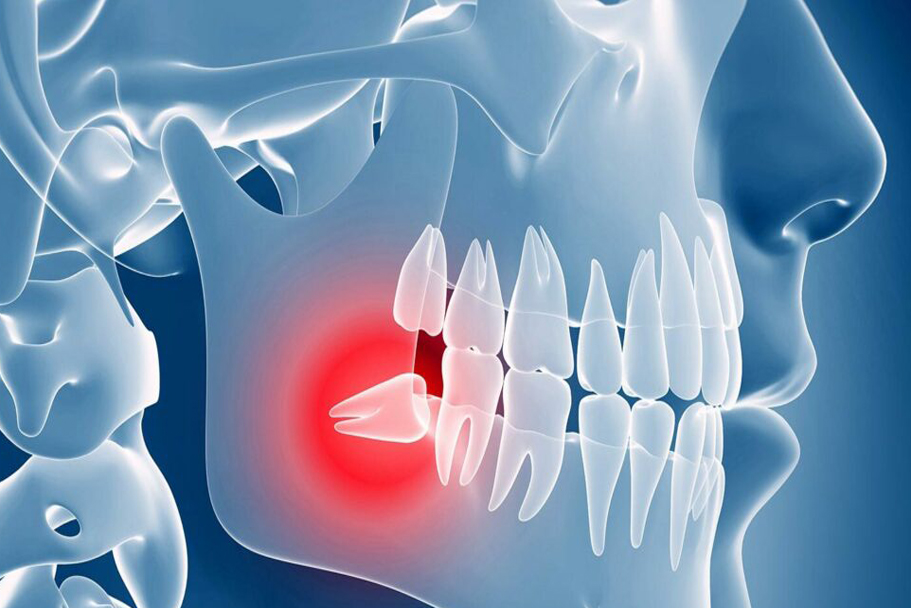DENTAL SURGERY
Dental surgery stands at the forefront of oral healthcare, addressing a wide spectrum of complex dental conditions that often require surgical intervention. It encompasses a diverse range of procedures, from routine tooth extractions to intricate oral surgeries aimed at restoring and enhancing oral health. Skilled dental surgeons employ advanced techniques, state-of-the-art equipment, and a commitment to patient comfort and safety to deliver effective treatments. At GIA clinics, we deal with an array of dental surgery procedures, exploring its various facets, including wisdom teeth removal, dental implant placement, jaw surgery, gum surgery and more.

Minor oral surgical procedures are common dental procedures that involve small incisions or manipulations in the oral cavity. They are typically performed in a dental office or clinic setting. Here are some examples of minor oral surgical procedures along with detailed treatment steps for each:
- Tooth Extraction:Tooth extraction involves the removal of a damaged, decayed, or impacted tooth from its socket.
- Local Anesthesia:Local anesthesia is administered to numb the area around the tooth, ensuring the procedure is painless.
- Loosening the Tooth:Using specialized instruments, the dentist gently loosens the tooth within its socket.
- Extraction:Once the tooth is sufficiently loosened, it is carefully extracted from the socket.
- Socket Care:The empty socket is cleaned to remove any debris or infection, and may be packed with gauze.
- Post-Extraction Instructions:The patient is provided with instructions on post-operative care, including pain management, eating restrictions, and oral hygiene.
- Explanation:A gingivectomy is the removal of excess or overgrown gum tissue, often performed to treat conditions like gum disease or for cosmetic reasons.
- Anesthesia:Local anesthesia is administered to numb the area where the gingivectomy will be performed.
- Incisions:The dentist makes precise incisions in the gum tissue to remove the excess or diseased gum.
- Tissue Trimming:Using specialized instruments, the dentist trims and shapes the gum tissue to achieve the desired contour.
- Final Inspection:The dentist ensures that the gum tissue is evenly contoured and aesthetically pleasing.
- Post-Procedure Care:The patient receives instructions on oral hygiene and post-operative care to facilitate proper healing.
- ExplanationA biopsy involves the removal of a small sample of tissue from the oral cavity for examination, often to diagnose or rule out oral lesions or abnormalities.
- Anesthesia:Local anesthesia is administered to numb the area from which the biopsy will be taken.
- Tissue Removal:Using a scalpel or specialized biopsy tool, a small sample of tissue is carefully removed.
- Hemostasis:Any bleeding is controlled, typically with pressure or cauterization.
- Closure (if necessary):In some cases, sutures may be used to close the biopsy site.
- Pathological Examination:The tissue sample is sent to a laboratory for microscopic examination and diagnosis
- Post-Biopsy Care:The patient is provided with instructions on post-operative care and informed about when to expect results.
- Preparation and Evaluation:The dentist or oral surgeon will begin by conducting a thorough examination of the frenulum in question. They will evaluate its size, position, and whether it is causing any restrictions or issues with oral function.
- Local Anesthesia:Before the procedure begins, the area around the frenulum is numbed using a local anesthetic to ensure the patient does not experience any pain or discomfort during the procedure.
- Conventional Incision:The surgeon uses a scalpel to make a small incision in the frenulum, then removes or modifies the tissue as needed.
- Laser Treatment (Laser Frenectomy):The patient is provided with instructions on post-operative care and informed about when to expect results.
- Hemostasis (if necessary):Any bleeding that occurs during the procedure is controlled using a specialized instrument or technique, such as sutures or a laser.
- Tissue Closure (if necessary):In some cases, sutures (stitches) may be used to close the incision. However, with laser frenectomy, sutures are often not required as the laser cauterizes the tissue.
- Post-Procedure Care:The patient is provided with instructions on how to care for the surgical site following the frenectomy. This may include information on diet, oral hygiene, and any prescribed medications.
- Follow-Up Appointment:A follow-up appointment is scheduled to monitor the healing process and ensure that there are no complications or issues.
- Oral Exercises (if necessary):Depending on the reason for the frenectomy, the patient may be advised to perform specific oral exercises to help improve oral function or prevent reattachment of the frenulum.
Treatment Steps:
Gingivectomy:
Treatment Steps:
Biopsy
Treatment Steps:
It's important to note that while these are considered minor surgical procedures, they should only be performed by qualified and experienced dental professionals. Patients should always follow post-operative instructions carefully to ensure proper healing and minimize complications.
Frenectomy:
A frenectomy is a minor surgical procedure that involves the removal or modification of the frenulum, a small fold of tissue that connects certain parts of the oral cavity. There are two main types of frenula in the mouth: the lingual frenulum (connecting the tongue to the floor of the mouth) and the labial frenula (connecting the lips to the gums). Here are the steps involved in a frenectomy:
Frenectomy Treatment Steps:
Incision or Laser Treatment:
There are two primary methods for performing a frenectomy:
Frenectomies are relatively quick procedures and are typically well-tolerated by patients. They are commonly performed to address issues such as speech impediments, restricted tongue movement (ankyloglossia or "tongue-tie"), or to improve the stability of dentures in cases of excessive labial frenula. It's important to note that any surgical procedure, including frenectomy, should be performed by a qualified and experienced dental professional.
